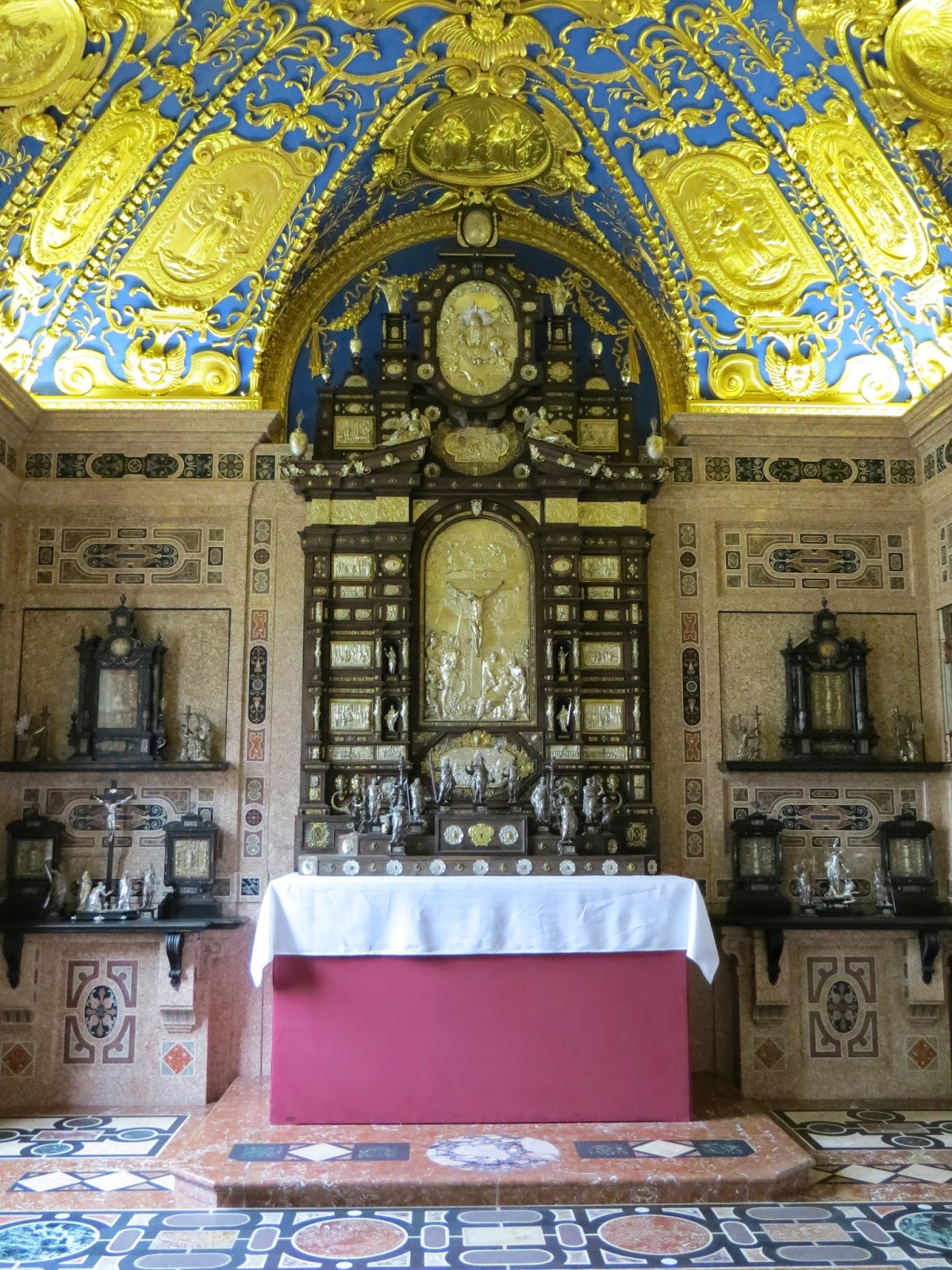After a lunch break, we were ready to begin our tour of the actual residence part of the museum. The exterior is quite impressive. There are seven courtyards and a garden nestled between the various wings of the palace.The Imperial Courtyard has a painted facade that looks like actual stonework.
The Chapel Courtyard is long and narrow.
It leads to the Fountain Courtyard.
At the beginning of the tour there is a map of the grounds and buildings. It cannot properly show the immense size of the area belonging to the Residence.
First on the tour are the Garden Halls.
The Antiquarium is breathtaking.
There is a very large collection of Chinese porcelain and artifacts.
What we saw was only a portion of the collection because the Porcelain Chambers are currently closed for renovation as is the King's Tract. Even so, there were still nearly 100 rooms on display.
Then it was up the stairs to the dozens and dozens of chambers used for the families and their guests. In one room restoration work was being done on some of the paintings.
The furniture and tapestries are all fine examples of the craftsmanship of the era each was made in.
Each room had its own unique lighting and large porcelain cabinets were filled with hot coals to heat these very large rooms.
Within the Residence is the Court Church of All Saints. In its original state it was beautiful and ornate as the photo below shows.
During the bombing in World War II it was all but destroyed.
The church has been rebuilt but not restored yet.
Under one of the arches there is a small part of a fresco that has survived.
Then it was on to more and more chambers including a music room complete with instruments of the day.
Each room had a fireplace, a piece of furniture or a painted ceiling that was fascinating to investigate. Many of the ceiling paintings are reproductions due to the severe bomb damage the Residence received.
And then we approached and entered the Imperial Chamber.
The Stone Rooms were notable not only for the various types of stone used, but also for the beautiful fireplaces in each room.
After that came the Reliquary. For those who may not know, reliquaries are religious objects which are said to hold items of significance such as bone from a saint or cloth worn by one. The Wittelsbach family were serious collectors as was the custom of the times. The dozens of reliquaries on display included several that were covered with bits of bone and one crown shaped pillow is said to contain the skull of John the Baptist.
In keeping with our religious theme we next toured Court Chapel and the Ornate Chapel.
And still there were more rooms to see and admire including the Imperial Chamber.
The last area on the tour was the Ancestral Hall. This is the ultimate in genealogy. This long hall is covered from floor to ceiling with portraits of the ruling families and an amazing family tree.
By the end our feet were tired and our eyes were on overload, but it was a wonderful first look at the treasures of this amazing city.













































































No comments:
Post a Comment